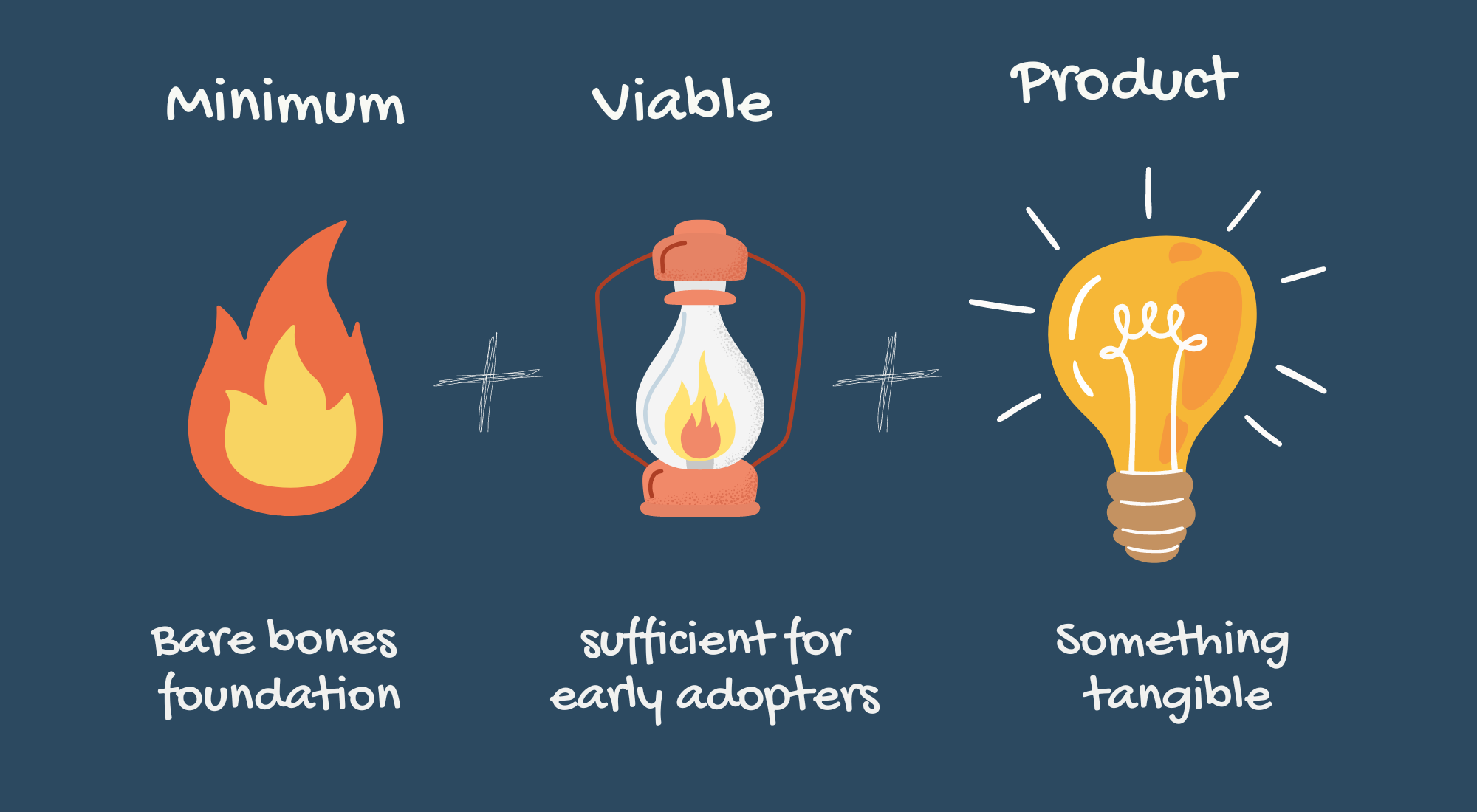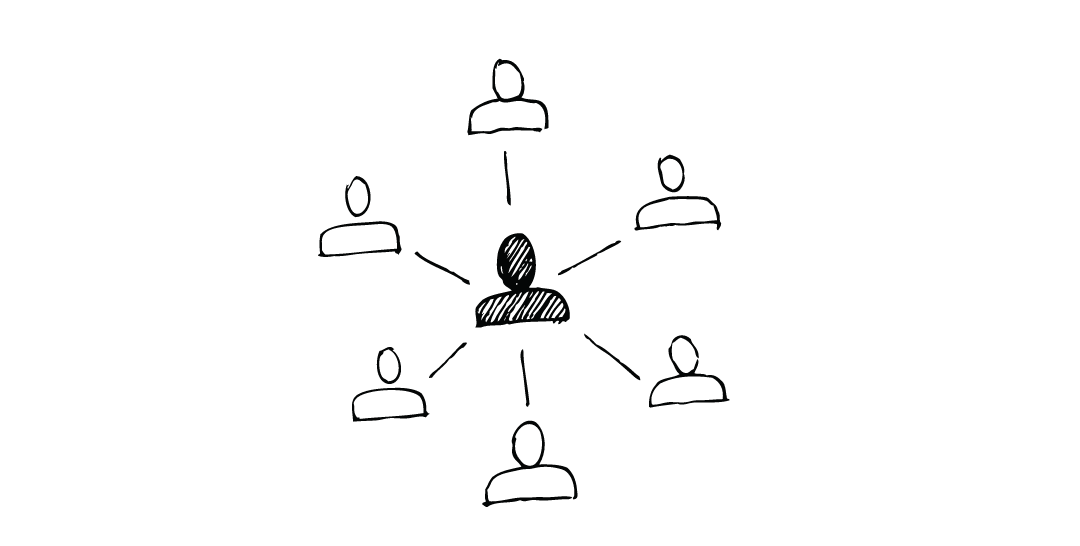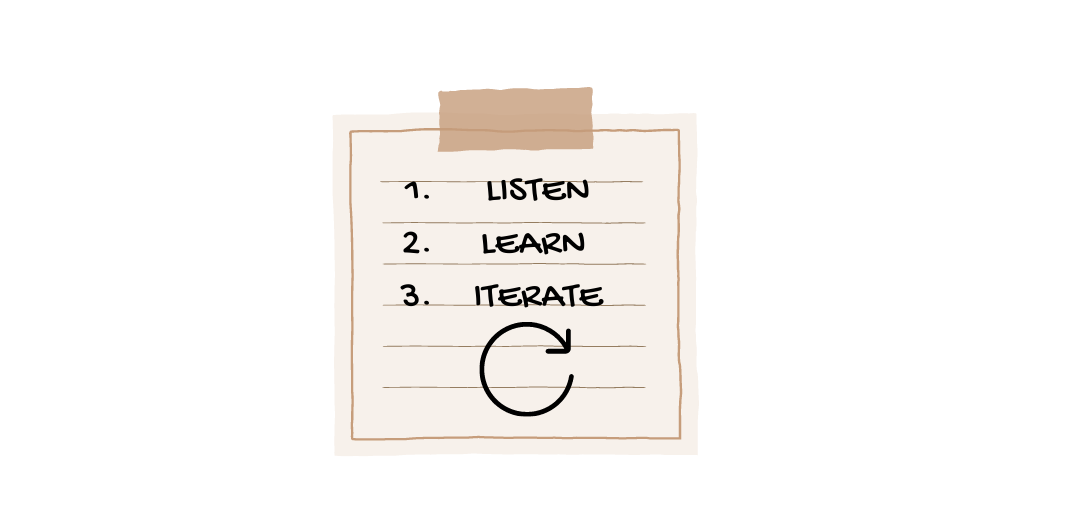How to Approach MVP Development for Your Startup
Learn how to approach MVP development for your startup. Practical guide for starting quickly, finding users, adapting, and keeping it lean to give your startup a head start.

Introduction
When we started Sych, the idea of developing tailored software solutions for businesses was clear, but the path to get there? Not so much. That's where the idea of an MVP, or Minimum Viable Product, came into play.
Now, I know MVPs are often associated with products, especially in the tech world. But what about a business like ours, focused on tailored software solutions for clients? The MVP mindset still applies, and it's more about an approach than a physical "thing."
It's about starting with the essential core of what you want to offer, putting it out there quickly, and then improving it based on real-world feedback. And trust me, it's as applicable to a service like ours as it is to the latest app on your smartphone.
In this article, I'm going to share some thoughts on MVP development. No fancy language, no textbook theories. Just some real talk on what it means to start quickly, listen to your customers, and make constant improvements.
Whether you're working on a tangible product or something more abstract like we were at Sych, I hope these insights help you find your way.
Start Quickly

You know, when I think about some of the most successful companies out there, I'm reminded of something vital: they didn't wait around to make everything perfect. They dove right in.
Take Zappos, the online shoe retailer, for instance. When they started in 1999, they didn't have a fully stocked warehouse or a perfect supply chain. But they didn't wait for that; The founder, Nick Swinmurn, literally went to local shoe stores, took pictures of the shoes, and posted them online. If someone ordered a pair, he'd go back to the store, buy the shoes, and ship them himself.
It sounds almost absurd now, but it worked. It was a quick way to test the concept, see if people were interested, and start building a customer base. Zappos is now a billion-dollar company, all because they were willing to dive in with a simple and quick start.
I've seen this in my own work too. There's always that voice in the back of your head saying, "Just one more tweak, one more patch, and it'll be perfect." But perfect is elusive, and while you're chasing it, opportunities could be slipping by.
Sometimes, it's about putting yourself out there. Get the core of your idea, your project, or your product out into the wild. See how people react, what they love, what they don't, and then make it better.
Find Your First Users

Finding your first users can be like searching for hidden treasure. You have a product that you believe in, but without someone to use it, validate it, and provide feedback, it can all fall flat. Sadly, I've seen promising startups with great ideas never make it past this point. Their journeys ended before they even began, all because they didn't get out there and find those first essential users.
Why is this stage so critical? It's simple: without real people using your product, you're shooting in the dark. Your MVP is a starting point; a test. It's meant to be handled, used, liked, disliked, and everything in between. Your first users aren't just customers; they're your product's life-line.
Consider Slack. Imagine if they had kept their communication tool to themselves, not shared it, and not received real-world feedback. Would they be the giant they are today? Probably not.
Think about those nameless startups that never made it off the ground. I can't tell you their names because they never made it to the public eye. They had ideas, plans, even products, but without engaging with real users, they stalled. No feedback, no direction, no momentum. They became cautionary tales rather than success stories.
So take the plunge. Talk to people. Share your product. Get them to use it. Engage with those who might find value in what you're offering.
Listen, Learn And Iterate

You've worked hard on your startup's MVP, right? It's your baby, and you've poured everything into it. But now comes the hard part: letting others tell you what they think. This can be tough, especially when you've put so much into it. It's too easy to get blinded by attachment. But listening to feedback is vital. Your customers might see things you've missed, or they might need something different altogether.
The thing is, you've got to stay focused on the problem you're solving and the people you're helping. Your solution? Well, you can't get too attached to that. It might need to change, and you have to be ready to make those changes. Many startups get stuck because they fall too hard for their first idea and ignore what customers are really saying. Don't let that happen to you.
Now, you have started listening to your customers. How do you iterate? It's a gradual process of making incremental improvements based on feedback. Consider Spotify, which started in 2008 with a simple goal of offering streaming music. Over time, they listened to users, adding features like playlists, podcast hosting, and personalized recommendations. This wasn't a one-time change; it was a series of enhancements that kept making the platform better and more attuned to user needs.
This process of continuous improvement is the real magic of startup success. You create something, put it out there, and then keep refining it. Remember, your MVP is the beginning, not the end.
Keep It Lean

You might be surprised to know that keeping your MVP simple and lean is often the way to go. What do I mean by "lean"? Think light and flexible, not heavy or bulky. It's like packing for a trip where you take only the essentials, leaving behind unnecessary baggage that you may not need.
Eric Ries also talks about this approach in his book, "The Lean Startup." It's not about cutting corners; it's about being smart and strategic.
Let's break it down:
- Simple Over Complex: Think a basic user interface versus intricate animations. Start with what's necessary and avoid unnecessary complexities.
- Fast Development Over Flawless Code: Think about getting a rough prototype out there versus writing the most intricate, error-free code. Sometimes, launching quickly with the core functionality is more valuable because that perfect code will probably change soon anyway.
- Adaptation Over Rigidity: Imagine frequent updates based on user feedback versus sticking to a set plan without any changes. Being ready to grow and adapt is crucial in the early stages.
The reason I've seen this approach work time and time again is simple: in most cases, the product that customers want is very different from what you think they want. By keeping things lean, you're not locking yourself into one path or overcommitting resources. Instead, you're giving yourself the flexibility to discover and respond to their needs.
So, keep it simple, focus on what matters most, and be ready to learn and grow.
Proven Building Strategies
Alright, we've talked about starting fast, getting those vital first users, listening to feedback, and crafting that lean MVP. Now, let's get into some nitty-gritty strategies that have always proven to be helpful to us:
Build a Feedback-Focused Landing Page Early
Think your idea's a winner? Why not let people sign up, or even pay, before building the MVP? Put up a landing page with an early-bird offer; You'll get a head start on building a user base, maybe even some funds, and best of all, real validation that you're onto something good.
Set a Tight Schedule
You've got this brilliant idea, and you can't wait to build it. But hold on, take a breath. Can you set a tight deadline? How about 2 weeks? If not, leave it for later. Focus on what you can accomplish now. Trust me; it'll keep you on track and away from those endless project extensions.
Document Your Plans
Ever started something, talked to someone, and then completely changed your direction? We've all been there. Write it down and stick to it! You'll be amazed how it keeps you grounded, and it won't turn that 4-week plan into a never-ending journey.
Trim the Fat
A week in, and it feels like you're drowning in features? Cut them. Stick to the vital stuff. The rest can wait. Get something out there; then, you can build on it.
Utilize What's Available
Software engineers, technical founders; we know you love building things from scratch. But for non-core funtionality? Why would you when there’s a ready-made solution out there? Use that existing API or open-source solution. You can't reinvent the wheel for everything.
Identify a Single Key Metric
Feeling swamped by too much data? To start, prioritize one thing to measure. Maybe it's how many people signed up this week. That's it. Track it, understand it. It's a simple way to see if you're on the right path without getting bogged down in numbers.
Don't Get Attached to Your First Draft
That MVP is your baby, I know. But don't marry it. Listen, adapt, and change. It's how you'll grow and meet the real needs of your customers.
The Sych Approach
We covered what MVPs are, to diving into real-world examples and practical strategies. Just like building a startup, MVP development isn’t about perfection; it’s about action. Start quickly, connect with your first users, adapt, and never stop improving.
Now imagine handing over all the intricate details of MVP development to a team that does this day in and day out. With Sych, you've got a ready-made, top-tier team from the get-go which can take that rough idea, shape it into a Minimum Viable Product, and then refine it to success. Your job? Focus on your vision and growth.
So if MVP development seems a maze, remember there’s a path through it. And if you want a guide, we're here, ready to walk that path with you. All you need to do is give us a shout. Let's turn that idea into something real.

